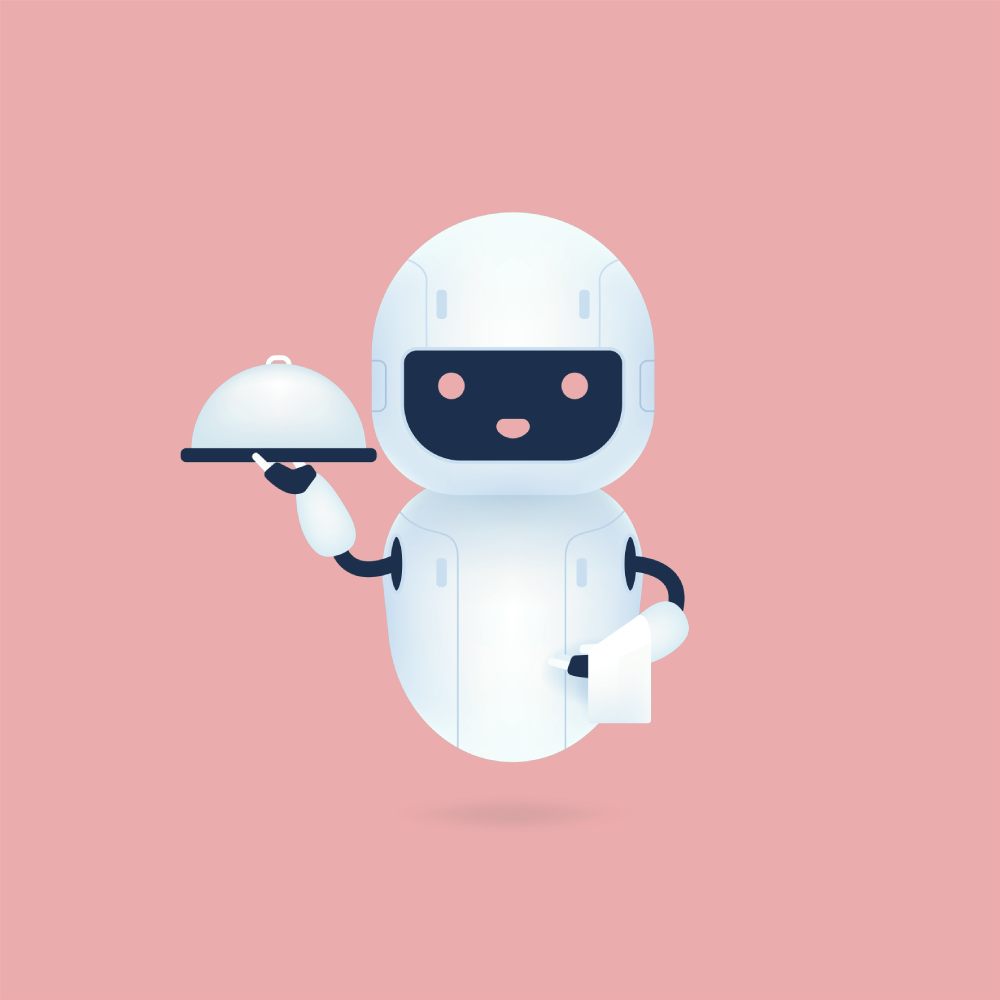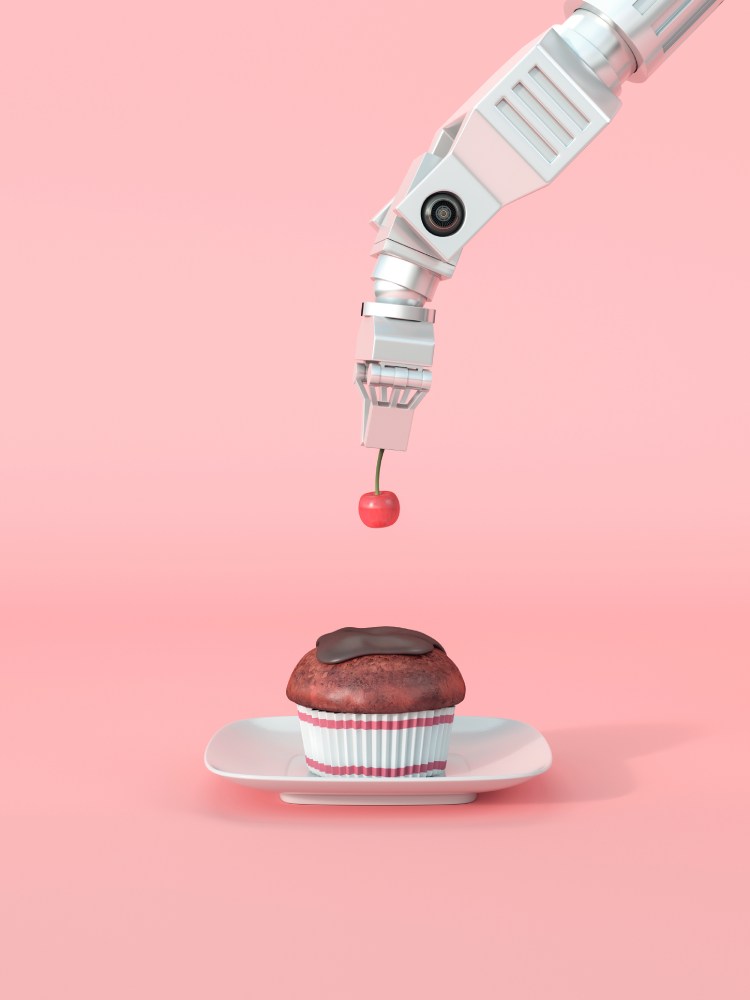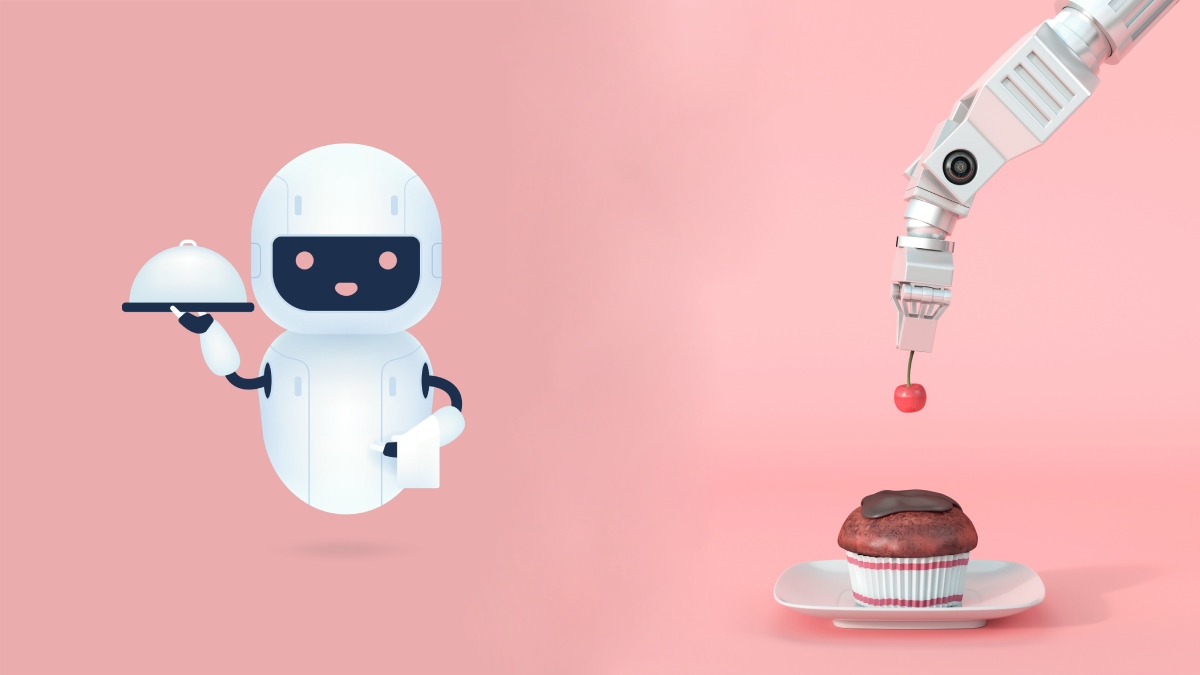Click here to read the Spanish version.
Africa, about two million years before our era. A primate, after the appearance of a black monolith, discovers that he can use a bone as a tool, a revelation that will lead him to defeat the rival clan and allow him to hunt animals, thus improving his food chain and the physiological evolution that this entails.
Minutes later, the primate throws the bone into the air, mimicking a spaceship, giving rise to one of the most sublime temporal ellipses in the history of cinema. A visual orgasm accompanied by the Blue Danube, by Johann Strauss. Thus Stanley Kubrick showed us, in 2001: A Space Odyssey, the leap or the evolutionary path of the primate to the present day and the birth of human intelligence.
Is artificial intelligence the next evolutionary leap for human beings? It may sound hyperbolic to call it an evolutionary leap, but everything points to the fact that it will change the rules of the game, and in gastronomy, as in many other fields, it will be an invaluable tool. Within the restaurant universe, there are several areas in which artificial intelligence is going to expand its reach.
In the field of creativity, companies such as Sony AI, in Japan, are investing all their potential to unravel how the creative process works. It is in the search for this first cornerstone of creativity that they draw on the modus operandi of different chefs, such as Eneko Atxa, Joan Roca or Hajime Yoneda.

Where is the first impulse that leads a cook to make a recipe? According to Sony, there is no clear starting point, but rather a concatenation of elements that lead to the creation of a recipe, and it is at that point where they look for patterns or starting points, these being the basis of the knowledge of this AI.
Inspirational starting points, ranging from an ingredient in a market, a journey, a texture or even abstract aspects such as music.
An irrefutable point in this process is the combination of flavors, so Sony, together with the University of Korea, are developing FlavorGraph, an interactive map, whose design is to establish an intelligent self-learning model to help chefs with the combination of flavors. A tool that draws on more than one million recipes and 1500 flavor particles and that, according to its creators, will help discover previously unexplored combinations such as chocolate and caviar.
IF THERE IS ONE CHEF WHO HAS DEMONSTRATED THAT THE CREATIVE PROCESS DOES NOT COME FROM A METAPHYSICAL PLANE, IT IS FERRAN ADRIÀ.
Despite all the advances and tools, in 2023, artificial intelligence does not intend to give an absolute answer to creativity, but a dialogue with it, through different routes and inputs at the click of a button with a chatbot.
If there is a chef who previously stated that the creative process did not come from a metaphysical plane, but from a series of patterns and above all from a lot of work combined with some genetics, it was Ferran Adriá, so we talked to him about this hybrid creativity that is coming to us.
For Ferran, knowledge, linked to criteria, is the mainstay on which AI must be based. Without quality knowledge, logically, the dialogue with it will not be of quality. Therefore, when it comes to introducing data, we must be very exhaustive and nourish it with theses and truthful information.
In catering, as in many other disciplines, the final result is subjective, and it is the chef who must have criteria when finalizing the recipe and testing it. The customer’s perception is also subjective, not everyone perceives acid, salty, bitter or sweet in the same way. The variants of each customer’s perception are infinite, such as origin, age, education, genetics, etc. What is clear to the Hospitalet native is that artificial intelligence will accelerate the creative process, and it is the mid-high-end restaurant industry that is going to make the most of it.
In the case of more conceptual restaurants such as Mugaritz or El Bulli -in his previous stage- Ferran comments that uncertainty looms more in his mind, he cannot imagine artificial creativity developing unknown concepts, such as deconstruction or spherification, but we should not close ourselves to absolutely nothing, he concludes.
Customer experience is another area where AI is going to be an indispensable tool. There is talk of micro gesture analysis through facial recognition, but according to Inma Martinez, chair of the AI Expert Group of the GPAI, the G7’s AI agency, this type of micro gesture analysis clashes with the recently passed official European legislation that prohibits the use of AI for facial recognition.

Data related to sensory anthropology will be optimally analyzed at breakneck speeds by AI. Biases such as country of origin, age or culture with their different perceptions and tastes will take tasting to another level.
Guest Intelligence tools and companies like Qualtrics already use AI for semantic analysis of customer reviews, giving restaurants and hotels a more realistic picture of what customers are and are not demanding.
In the field of manual labor productivity, we are still a long way from finding android chefs in our kitchens. According to Ramón Mantarás, director of the Artificial Intelligence Research Institute at CSIC, a task as simple as frying an egg would be a very high challenge for robotics, which, together with the high cost of developing it, means that it is far from being profitable. What we can find is a very considerable improvement in home automation linked to AI. Refrigerators, for example, will be able to analyze ethylene gases from our vegetables, which are responsible for their decomposition, and thus prioritize their consumption.
Sustainability is undoubtedly one of the fields in which AI is making the greatest advances. Companies such as Moa are using AI to develop proteins from waste or by-products derived from food chains, thus reducing waste. The agriculture of the present-future is also using artificial intelligence in the optimization of farmland, the exact time of harvest, detection of the onset of pests by aerial images, leaks in irrigation or the analysis of purchasing patterns.
With all of the above, we have a very encouraging future ahead of us. It is undoubtedly easy to fall into neophobia, but to go against this technology would be to go against human evolution. It is not possible to know whether chefs who feed on this intelligence will be ostracized, whether we will end up seeing androids serving coffee, whether the best recipe in history will be created by this new technology or whether we are facing the birth of Nietzsche’s digital superman, but let us not forget that the greatest advances in our civilization have been without the help of this artificial intelligence. In the field of catering, in the end, it all comes down to what is on the plate being edible and making us enjoy it, so let’s not magnify this new technology but, rather, let’s take advantage of it in an ethical and common sense way. We are a consequence of our time and in 2023, nothing is immutable.

